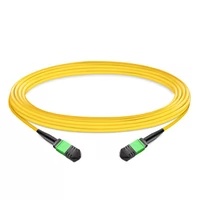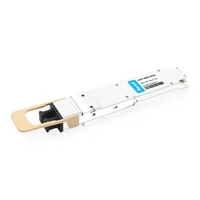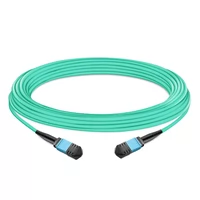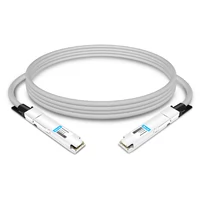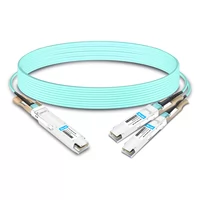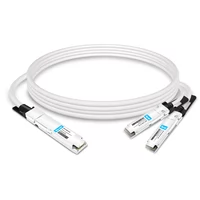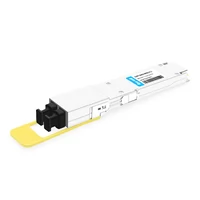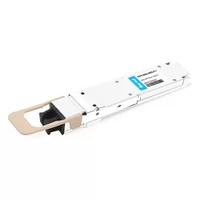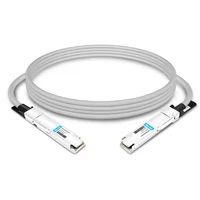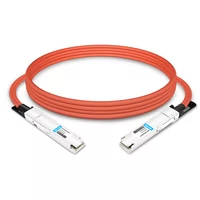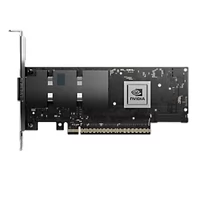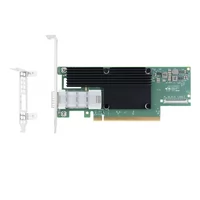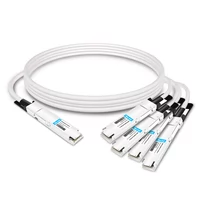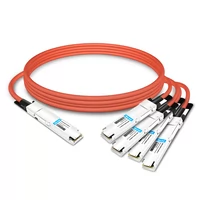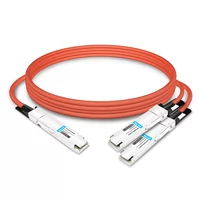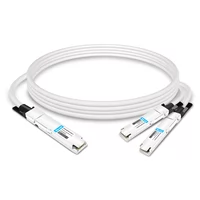In high-performance computing (HPC), nothing is more important than efficient and reliable data transfer. Infiniband technology is known for its large bandwidth and low latency times, making it ideal for speedy clusters and systems using GPUs. This blog post looks at what makes up Infiniband, how it can be beneficial, and where it can be used. By learning about what Infiniband can do and how it works, businesses will be able to make better choices on how they should set up their HPC environments, which in turn will lead to faster data processing that happens without any interruptions.
Table of Contents
ToggleWhat is Infiniband and How Does It Work?

Understanding Infiniband Technology
To fulfill the needs of HPC environments, Infiniband is a super-fast networking technology. It runs on a switched fabric topology, which helps create efficient paths for communication between nodes. The architecture of Infiniband comprises switches that route data packets and Host Channel Adapters (HCAs) to connect end devices. Through remote direct memory access (RDMA), Infiniband enables direct transfers of memory between systems, thus minimizing latency and reducing CPU involvement. It can reach data transfer rates of up to 200 Gbps and has a latency as low as 500 nanoseconds, which makes it perfect for applications such as parallel computing or machine learning workloads where there is a requirement for fast exchange of information.
Infiniband Architecture and Specification
To support the heavy-duty data transmission requirements of HPC environments, the Infiniband architecture is purposefully designed. There are two main components at its heart: Host Channel Adapters (HCAs) and switches. HCAs act as an interface between end devices (e.g., servers, storage systems) and the InfiniBand fabric. These adapters have RDMA capabilities that allow direct memory access between devices without involving the CPU hence reducing latency significantly.
Switches, on the other hand, route data packets through the network, ensuring efficient communication paths with minimum delay between nodes. Various link speeds and configurations are supported by InfiniBand, such as 1x lane, which can be aggregated to achieve higher bandwidths like 4x or even 12x lanes. Implementation presently being used supports speeds of up to 200 Gbps per port, i.e., EDR (Enhanced Data Rate) or HDR (High Data Rate); this provides enough throughput for applications that demand a lot, such as molecular dynamics simulations, weather modeling, or large scale machine learning.
Additionally, QoS (Quality of service) mechanisms that prioritize critical data traffic while maintaining predictable performance levels were included in InfiniBand. Moreover, scalability allows non-blocking interconnections among thousands of nodes thus enabling networks to grow alongside computational capabilities. It is because of this strong design principle that it is possible for InfiniBand to serve as the backbone infrastructure for modern-day supercomputers.
Key Features of Infiniband
- Very Fast and Very Short Time: Infiniband provides ultra-high data transfer rates, currently 200 Gbps per port with HDR, and consistently low-latency communication. That is why it is perfect for HPC applications that need fast data exchanges like real-time analytics or scientific simulations.
- RDMA (Remote Direct Memory Access): One of the most striking features of Infiniband is its RDMA capability which enables direct data transfer between different devices’ memory locations without CPU intervention. This dramatically reduces latency and leaves more CPU resources for other tasks thus improving overall system performance.
- Scalability: Infiniband has been designed for good scalability – it can connect thousands nodes together into large HPC clusters. Non-blocking architecture guarantees that network will not become a bottleneck while growing larger which allows performing computations over large scales and running data-intensive applications simultaneously.
- Quality of Service (QoS): QoS mechanisms are integrated in Infiniband to control and prioritize network traffic. This feature becomes essential when there are critical streams that should be given precedence over others therefore ensuring sustained levels of performance in such environments.
- Flexible Topologies and Configurations: The fabric supports various topologies such as Fat Tree, Mesh, or Torus, thus enabling networks to be matched with specific performance requirements as well as scalability needs. Moreover different lane configurations (1x, 4x, 12x) support gives flexibility in achieving desired bandwidths.
- Reliability and Fault Tolerance: Advanced error detection/correction mechanisms are used in Infiniband so that integrity of data could be maintained during transmission while making sure reliable communication takes place within the system all the time i.e., link-level flow control coupled with adaptive routing contribute much towards high reliability hence applicable mission-critical applications.
How Does Infiniband Compare to Ethernet?
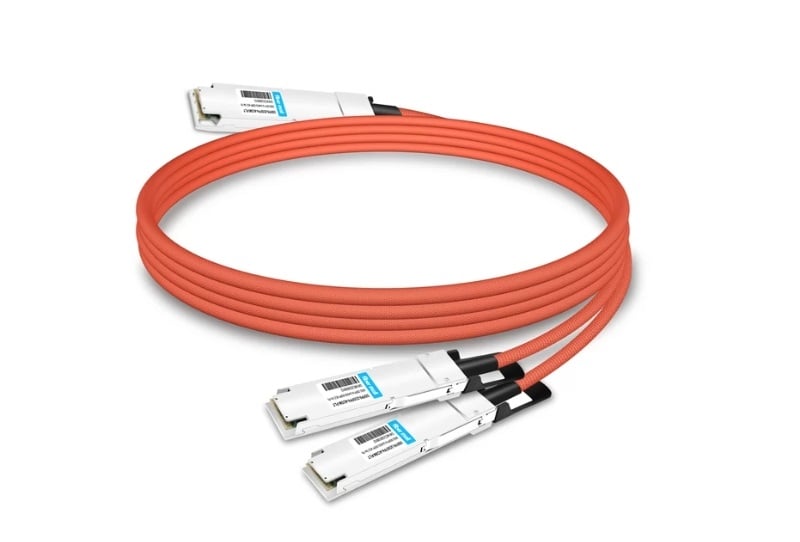
Infiniband vs Ethernet: The Battle for Low Latency
When Infiniband is compared with Ethernet in terms of low latency, it is typically observed that Infiniband performs better than Ethernet because of its construction and design. Among the features of Infiniband that are key is the lower communication overheads, which leads to a decrease in latency. Moreover, Remote Direct Memory Access (RDMA) is supported by this technology, thereby enabling data transfer between computers directly from memory without involving the CPU, hence reducing delays and freeing up processing power.
On the contrary, Ethernet has been known to have wider coverage and be cheaper than other networks, especially now with Data Center Bridging (DCB) as well as RDMA over Converged Ethernet (RoCE). Still, even after these improvements have been made on it, ethernet always shows higher latencies generally than Infiniband does.
Thus, for applications that require ultra-low latency together with high throughput, such as complex simulations or high-performance computing (HPC), InfiniBand would be preferred most of the time.
Infiniband Provides High Bandwidth: Comparing Speeds and Throughput
Infiniband outstrips Ethernet in terms of bandwidth and throughput. In fact, Infiniband HDR (High Data Rate) offers speeds of up to 200 Gbps per port, which is much faster than the most advanced 400 Gbps or even the commonly found 100 Gbps in Ethernet. Moreover, many lanes can be aggregated together with Infiniband so that its data transfer efficiency becomes high due to scalability according to application needs for throughput. The architecture of this technology has been designed from the ground up with large amounts of low-latency processing built into it, thereby making InfiniBand well-suited for use cases involving massive volumes of information such as those encountered within HPC clusters and hyperscale data centers.
Reliability and Scalability: Infiniband Advantages Over Ethernet
Compared to Ethernet, Infiniband is more trustworthy and scalable which is necessary for supporting the function of large systems. Even at long distances, they have error detection and correction methods that are strong enough to maintain data integrity, hence reducing retransmission rates and ensuring uniform performance. Additionally, it has a deterministic nature of operation that guarantees predictability in terms of latency; this feature becomes important when dealing with applications that need closely coordinated processes.
Still on the same note, QoS (Quality of Service) capabilities found within Infiniband provide for allocating bandwidth deterministically thereby making sure performance is sustained across different workloads with varying requirements. To be able to scale well, InfiniBand can effectively support large numbers of nodes, thereby allowing computing resources to grow without any noticeable decline in performance. This, therefore, makes them the most suitable choice for environments like supercomputer clusters or enterprise-level data centers where huge amounts of information need to be transferred and processed frequently over wide areas.
What are the Advantages of Infiniband Networks?

Low Latency and High Performance
InfiniBand networks have a reputation for being very fast, which is why they are known as low-latency and high-performance networks. According to those in the know, it has been reported that InfiniBand could go down to 100 ns of latency, much less than Ethernet ever could. This super-low period of time guarantees the quick arrival of packets so that latency-sensitive application programs can perform better.
Furthermore, InfiniBand boasts support for very high throughput: today’s systems offer up to 200 Gigabits per second (Gbps) per connection. This high bandwidth is necessary when dealing with massive data transfers within HPC clusters or between data centers. Comparing it with Ethernet that sometimes experiences higher latencies and lower data rates; this makes InfiniBand an efficient and robust solution for high performance computing among other demanding applications.
Remote Direct Memory Access (RDMA)
According to reliable sources, Remote Direct Memory Access (RDMA) is a major feature in Infiniband networks that permits the transfer of data between two computers’ memory without utilizing their OSes. This creates a direct path for data which results into less latency as well as low CPU overheads. RDMA improves performance through enabling zero-copy networking i.e., where information moves straight from application buffer to network instead of first passing through an operating system buffer like what happens with traditional network protocols.
Reportedly, this technology can achieve latencies as low as one microsecond and support data transfers of several hundred gigabits per second. With such speeds, it becomes clear why RDMA would be most useful in applications that need real-time processing power coupled with high throughput; for example financial trading systems or distributed databases used in large scale data analytics. Kernel bypass is also supported by RDMA which enables applications to communicate directly with network hardware thus further reducing latency while improving efficiency of data transfers.
In summary, Remote Direct Memory Access (RDMA) delivers high bandwidths, low latencies, and efficient utilization of CPU, thereby proving itself an essential technology wherever there is a need for quickness in accessing information or enhancing performance.
HDR Infiniband and Future Prospects
The next step in networking technology is represented by HDR (High Data Rate) Infiniband, which have been designed to meet the demands of data centers and high-performance computing environments. 200 Gbps can be achieved by this system when it comes to transferring information from one point to another, thus addressing higher data rates requirement with lower latency.
Many features differentiate HDR Infiniband from its predecessors. One of them is that it uses the latest generation switch silicon technology that improves signal integrity and error correction capabilities. This makes data transmission more reliable even over longer distances making it suitable for large-scale distributed systems.
Another important aspect of HDR Infiniband is its future role as EDR (Extreme data Rate) and beyond enabler, hence fostering complex simulations, massive-scale analytics, and real-time applications that necessitate ultra-low latency. Moreover, given AI/ML workloads advancements there will be an escalating need for such networks having high bandwidths but low latencies like those provided by HDR Infiniband.
By quickly processing huge amounts of information, the deployment of these networks can accelerate scientific research breakthroughs in various fields, such as autonomous vehicles or virtual reality, among others. To conclude, this means that not only does HDR InfiniBand offer a solution for current high-performance network needs but also indicates a forward-looking approach towards supporting next-generation computational as well as data-intensive applications.
How is Infiniband Used in Data Centers and HPC?
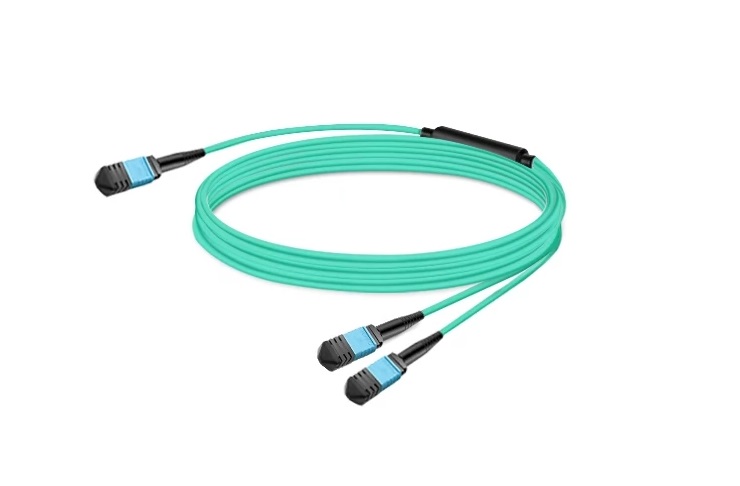
Infiniband in High-Performance Computing (HPC)
The world’s fastest supercomputers rely on Infiniband to enable high-speed data transfer between nodes. This is necessary for large-scale simulations, scientific research and analytics among other things. Even more importantly, it allows the clusters to process these applications faster than ever before by directly connecting computing devices in an HPC system with one another by creating a network-boosted parallel computer architecture that gets rid of traditional bottlenecks associated with shared storage or memory access methods, thereby enabling each node access its own resources independently from others.
Integrating Infiniband in Data Centers
In current data centers, the integration of Infiniband increases performance and scalability by providing a high-speed interconnect that is essential for data-intensive tasks. For fast communication between servers, storage systems, and other network devices in particular, it is deployed with this aim, thus making operations of a data center more efficient. It has advanced features such as remote direct memory access (RDMA), which reduces CPU overhead, hence boosting the speed at which information is transferred. Also, its own expandable design lets one add capacity step by step while ensuring continuous productivity over an extended period where demand might have grown larger than before within such a facility. Hence through using InfiniBand technology, there can be achieved higher throughput rates within Data Centers coupled with lower latencies, thereby enhancing efficiencies necessary for supporting different applications ranging from cloud computing to big data analytics and machine learning.
Infiniband for GPU Clusters and AI
GPU clusters and AI applications are dependent on Infiniband because it can handle high bandwidth and low latency requirements well. As AI models become more complex and GPU workloads larger, Infiniband interconnects enable fast data sharing between GPUs which in turn speeds up training and inference times. Such performance improvements are made possible by features like RDMA support or hardware offloading which reduces CPU utilization as well as betters data transfer efficiencies. With InfiniBand large-scale deployment for AI systems, there is minimalization of bottlenecks so that GPU resources can be utilized optimally, leading to faster computations as well improved scaling efficiency of artificial intelligence models while at the same time allowing for processing huge amounts of data quickly with higher precision levels through this technology. Thereby making it possible to process larger datasets faster and with greater accuracy. Thus, using Infiniband within GPU clusters greatly enhances the capabilities of AI research, ranging from deep learning algorithms up to predictive analytics applicable in various fields of life.
What are the Components of an Infiniband Network?
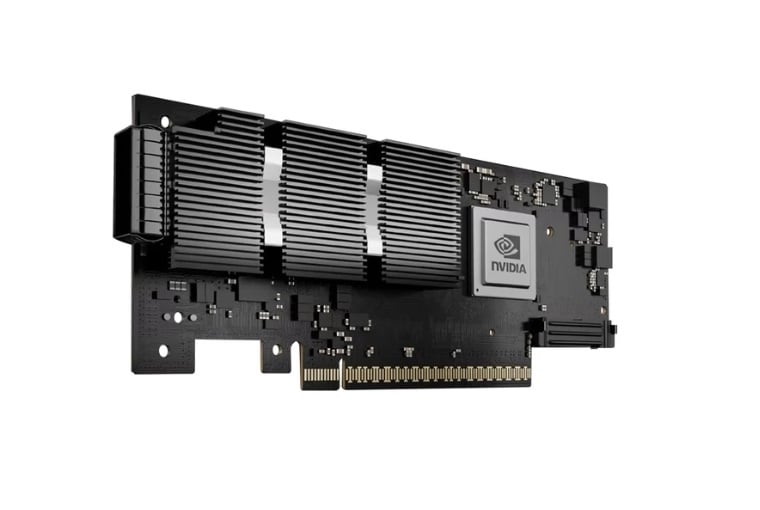
Infiniband Switches and Adapters
InfiniBand switches and adapters are essential components of InfiniBand networks. Fabric switches, also known as Infiniband switches, are responsible for forwarding data packets through the network. These switches link multiple devices together to enable fast communication and data transfer between them. They have different port numbers which can range from 8 to 648 ports; they interconnect various topologies like Fat-Tree and Clos necessary for scaling network infrastructure effectively.
On the other hand, host channel adapters (HCAs), also called Infiniband adapters, are installed on network devices such as servers or storage systems, enabling their connection to an InfiniBand fabric. HCAs facilitate direct memory access (RDMA) over Infiniband, which reduces CPU overhead, thus improving transfer rates of information. They support important features such as QDR (Quad Data Rate) and FDR (Fourteen Data Rate), both needed to meet high throughput and low latency requirements in modern data centers serving applications.
Together, these two types of devices constitute the main part of any given InfiniBand Network — they serve different purposes but work towards achieving efficient and reliable communication across a wide range of high-performance computing applications.
Infiniband Cables and Connectors
To make an InfiniBand network, you need cables and connectors. These two components plug in the switches, adapters and other devices of the network. Typically, these cables come in two types: copper and fiber optic. Copper cables are used for shorter distances because they are cheaper and easier to install than fiber optics; SDR (Single Data Rate), DDR (Double Data Rate), and QDR (Quad Data Rate) are some of the supported speeds that copper cables can handle. For longer distances or higher performance demands, it is preferred to use fiber optical cable since it allows more bandwidth with less signal loss.
InfiniBand connectors have a number of standardized formats like QSFP (Quad Small Form-factor Pluggable) which can support QDR, FDR as well as EDR speed data transfer rates due to its high-density design; this connector is versatile enough so that it can be used with both copper and fiber optic cables which makes network planning flexible and scalable.
In conclusion, infiniband cables along with their connectors serve as crucial elements in setting up strong and adaptable high-performance networking infrastructure where different rates/distance combinations may be required for efficient communication within a network.
Port and Node Configuration
In an InfiniBand network, port and node configuration is the process of setting up and managing network ports as well as nodes with a view to optimizing performance and reliability. A port, in this case, refers to the interface through which a device connects to the network; switches or adapters can have many ports to support multiple connections. Conversely, nodes are individual devices or systems connected to a network, such as servers and storage devices, among others.
To configure ports involves giving them addresses besides ensuring that they are allocated properly so that the load on the networks is balanced. InfiniBand switches use advanced algorithms for port mapping and data path optimization. This allows for dynamic allocation which maximizes throughput across all points while minimizing delays within any given section of the system.
On the other hand, when configuring a node it is necessary to specify some network parameters like Node GUIDs (Globally Unique Identifiers) as well as policies for subnet managers. The subnet manager discovers all nodes within its fabric topology description and then configures each one along with its interconnection(s). It does path resolution, among other tasks, such as performance monitoring plus fault management, which ensures efficient operation of networks by promptly dealing with potential problems wherever they may occur.
Port and node configuration must be done effectively if at all high-speed communication characterized by low latency in InfiniBand networks is to be achieved. Administrators should therefore plan carefully for these components while managing them in order that seamless transmission of data can take place thereby guaranteeing robust performance of such environments used for high-performance computing purposes.
Frequently Asked Questions (FAQs)
Q: What is Infiniband and how does it differ from other network technologies?
A: Primarily used in high-performance computing environments, InfiniBand is a low-latency, high-speed network technology. It has data transfer rates that are much higher than those of traditional ethernet networks and lower latencies as well, which makes it useful for interconnecting servers, storage devices and GPUs. Supercomputers also use this technology because it efficiently handles large amounts of data.
Q: Who manages the Infiniband specification?
A: The InfiniBand Trade Association (IBTA) maintains and develops the InfiniBand specification. IBTA ensures that various vendor products can work together thus creating wide range solutions.
Q: What are the primary benefits of using Infiniband for data transfer?
A: Compared to Gigabit Ethernet or Fibre Channel – which are considered conventional network technologies – lower latency, increased throughput and better scalability are among the many advantages that come with using an infiniband for transferring data. Thus making it suitable in scenarios where there is need for fast & reliable movement of information such as Datacenters or HPC clusters.
Q: Can Infiniband be used in conjunction with Ethernet networks?
A: Yes; through suitable gateways or adapters that enable integration between them both., organizations can still enjoy higher speeds offered by infinibands while still keeping their compatibility with existing Ethernet infrastructures intact.
Q: What data transfer rates can Infiniband support?
A: With NDR(Next Data Rate) at 400 Gbps(Gigabits per second), InfiniBand can handle even very demanding applications such as AI workloads or scientific simulations, which require extremely high amounts of throughput.
Q: What is the way Infiniband ensures quality of service (QoS) is intended for critical applications?
A: Traffic can be prioritized, and bandwidth can be allocated by infiniband so that QoS is supported. This makes sure that important programs get enough network resources for them to work at their best. Virtual lanes and service levels are among the features which help in ensuring consistent and reliable data transfer.
Q: What are some components of an InfiniBand network architecture?
A: Some components found within an InfiniBand network architecture include Host Channel Adapters (HCAs), Target Channel Adapters (TCAs), InfiniBand switches and Network Adapters, which together form a switched fabric used for interconnecting servers and storage devices thereby allowing high-speed communication between them.
Q: How does Infiniband achieve lower latency compared to other network technologies?
A: Unlike traditional Ethernet networks, this technology achieves lower latency by utilizing optimized protocol stack as well as efficient hardware design. To do this, it uses HCAs that offload processing tasks from the CPU hence reducing time taken to move data across a network; therefore resulting in much lower latencies.
Q: What companies provide Infiniband products and solutions?
A: The main suppliers of these types of items are NVIDIA(formerly Mellanox), Intel, alongside other firms specializing in high-performance computing & data center technology. They offer varying speeds clusters through different models, such as adapters or switches, among other components required for building high-speed clusters/interconnects.
Q: Does Infiniband work well with connecting GPUs in high-performance computing?
A: Yes, it does so efficiently because its low latencies coupled with high data transfer rates enable optimal connection between these two devices, thus making communication effective when performing computational tasks like deep learning or scientific simulations that require such functionality.
Related Products:
-
 NVIDIA MMS4X00-NM Compatible 800Gb/s Twin-port OSFP 2x400G PAM4 1310nm 500m DOM Dual MTP/MPO-12 SMF Optical Transceiver Module
$900.00
NVIDIA MMS4X00-NM Compatible 800Gb/s Twin-port OSFP 2x400G PAM4 1310nm 500m DOM Dual MTP/MPO-12 SMF Optical Transceiver Module
$900.00
-
 10m (33ft) 12 Fibers Female to Female MPO Trunk Cable Polarity B LSZH OS2 9/125 Single Mode
$32.00
10m (33ft) 12 Fibers Female to Female MPO Trunk Cable Polarity B LSZH OS2 9/125 Single Mode
$32.00
-
 NVIDIA MMA4Z00-NS Compatible 800Gb/s Twin-port OSFP 2x400G SR8 PAM4 850nm 100m DOM Dual MPO-12 MMF Optical Transceiver Module
$650.00
NVIDIA MMA4Z00-NS Compatible 800Gb/s Twin-port OSFP 2x400G SR8 PAM4 850nm 100m DOM Dual MPO-12 MMF Optical Transceiver Module
$650.00
-
 NVIDIA MFP7E10-N015 Compatible 15m (49ft) 8 Fibers Low Insertion Loss Female to Female MPO Trunk Cable Polarity B APC to APC LSZH Multimode OM3 50/125
$54.00
NVIDIA MFP7E10-N015 Compatible 15m (49ft) 8 Fibers Low Insertion Loss Female to Female MPO Trunk Cable Polarity B APC to APC LSZH Multimode OM3 50/125
$54.00
-
 NVIDIA MCP4Y10-N00A Compatible 0.5m (1.6ft) 800G Twin-port 2x400G OSFP to 2x400G OSFP InfiniBand NDR Passive Direct Attach Copper Cable
$105.00
NVIDIA MCP4Y10-N00A Compatible 0.5m (1.6ft) 800G Twin-port 2x400G OSFP to 2x400G OSFP InfiniBand NDR Passive Direct Attach Copper Cable
$105.00
-
 NVIDIA MFA7U10-H015 Compatible 15m (49ft) 400G OSFP to 2x200G QSFP56 twin port HDR Breakout Active Optical Cable
$785.00
NVIDIA MFA7U10-H015 Compatible 15m (49ft) 400G OSFP to 2x200G QSFP56 twin port HDR Breakout Active Optical Cable
$785.00
-
 NVIDIA MCP7Y60-H001 Compatible 1m (3ft) 400G OSFP to 2x200G QSFP56 Passive Direct Attach Cable
$99.00
NVIDIA MCP7Y60-H001 Compatible 1m (3ft) 400G OSFP to 2x200G QSFP56 Passive Direct Attach Cable
$99.00
-
 NVIDIA MMS4X00-NM-FLT Compatible 800G Twin-port OSFP 2x400G Flat Top PAM4 1310nm 500m DOM Dual MTP/MPO-12 SMF Optical Transceiver Module
$1199.00
NVIDIA MMS4X00-NM-FLT Compatible 800G Twin-port OSFP 2x400G Flat Top PAM4 1310nm 500m DOM Dual MTP/MPO-12 SMF Optical Transceiver Module
$1199.00
-
 NVIDIA MMA4Z00-NS-FLT Compatible 800Gb/s Twin-port OSFP 2x400G SR8 PAM4 850nm 100m DOM Dual MPO-12 MMF Optical Transceiver Module
$650.00
NVIDIA MMA4Z00-NS-FLT Compatible 800Gb/s Twin-port OSFP 2x400G SR8 PAM4 850nm 100m DOM Dual MPO-12 MMF Optical Transceiver Module
$650.00
-
 NVIDIA MCP4Y10-N00A-FTF Compatible 0.5m (1.6ft) 800G Twin-port 2x400G OSFP to 2x400G OSFP InfiniBand NDR Passive DAC, Flat top on one end and Finned top on other
$105.00
NVIDIA MCP4Y10-N00A-FTF Compatible 0.5m (1.6ft) 800G Twin-port 2x400G OSFP to 2x400G OSFP InfiniBand NDR Passive DAC, Flat top on one end and Finned top on other
$105.00
-
 NVIDIA MCA4J80-N003-FTF Compatible 3m (10ft) 800G Twin-port 2x400G OSFP to 2x400G OSFP InfiniBand NDR Active Copper Cable, Flat top on one end and Finned top on other
$600.00
NVIDIA MCA4J80-N003-FTF Compatible 3m (10ft) 800G Twin-port 2x400G OSFP to 2x400G OSFP InfiniBand NDR Active Copper Cable, Flat top on one end and Finned top on other
$600.00
-
 NVIDIA MMA4Z00-NS400 Compatible 400G OSFP SR4 Flat Top PAM4 850nm 30m on OM3/50m on OM4 MTP/MPO-12 Multimode FEC Optical Transceiver Module
$550.00
NVIDIA MMA4Z00-NS400 Compatible 400G OSFP SR4 Flat Top PAM4 850nm 30m on OM3/50m on OM4 MTP/MPO-12 Multimode FEC Optical Transceiver Module
$550.00
-
 NVIDIA NVIDIA(Mellanox) MCX75510AAS-NEAT ConnectX-7 InfiniBand/VPI Adapter Card, NDR/400G, Single-port OSFP, PCIe 5.0x 16, Tall Bracket
$1650.00
NVIDIA NVIDIA(Mellanox) MCX75510AAS-NEAT ConnectX-7 InfiniBand/VPI Adapter Card, NDR/400G, Single-port OSFP, PCIe 5.0x 16, Tall Bracket
$1650.00
-
 NVIDIA NVIDIA(Mellanox) MCX653105A-HDAT-SP ConnectX-6 InfiniBand/VPI Adapter Card, HDR/200GbE, Single-Port QSFP56, PCIe3.0/4.0 x16, Tall Bracket
$1400.00
NVIDIA NVIDIA(Mellanox) MCX653105A-HDAT-SP ConnectX-6 InfiniBand/VPI Adapter Card, HDR/200GbE, Single-Port QSFP56, PCIe3.0/4.0 x16, Tall Bracket
$1400.00
-
 NVIDIA MCP7Y50-N001-FLT Compatible 1m (3ft) 800G InfiniBand NDR Twin-port OSFP to 4x200G Flat Top OSFP Breakout DAC
$255.00
NVIDIA MCP7Y50-N001-FLT Compatible 1m (3ft) 800G InfiniBand NDR Twin-port OSFP to 4x200G Flat Top OSFP Breakout DAC
$255.00
-
 NVIDIA MCA7J70-N004 Compatible 4m (13ft) 800G InfiniBand NDR Twin-port OSFP to 4x200G OSFP Breakout ACC
$1100.00
NVIDIA MCA7J70-N004 Compatible 4m (13ft) 800G InfiniBand NDR Twin-port OSFP to 4x200G OSFP Breakout ACC
$1100.00
-
 NVIDIA MCA7J60-N004 Compatible 4m (13ft) 800G Twin-port OSFP to 2x400G OSFP InfiniBand NDR Breakout Active Copper Cable
$800.00
NVIDIA MCA7J60-N004 Compatible 4m (13ft) 800G Twin-port OSFP to 2x400G OSFP InfiniBand NDR Breakout Active Copper Cable
$800.00
-
 NVIDIA MCP7Y00-N001-FLT Compatible 1m (3ft) 800G Twin-port OSFP to 2x400G Flat Top OSFP InfiniBand NDR Breakout DAC
$160.00
NVIDIA MCP7Y00-N001-FLT Compatible 1m (3ft) 800G Twin-port OSFP to 2x400G Flat Top OSFP InfiniBand NDR Breakout DAC
$160.00


